This may look more like fan colors on top of existing inks than like fanart, but a closer look shows that’s even though it’s quite close to Fournier’s original (see below the cut), it has been redrawn completely.
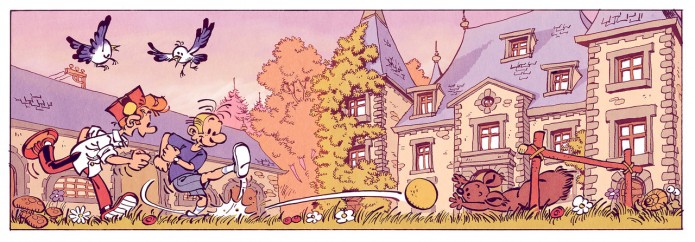
Image from DeviantArt.
Fournier started work on his tenth Spirou & Fantasio album in 1980, but had only drawn five pages when he was forced to leave the comic shortly thereafter. La Maison dans la mousse (“The House in the Foam”) would apparently have brought a more dreamlike, surreal quality to the series, more like Fournier’s other comic Bizu, turning it into a magical universe where bikes and cars come alive.


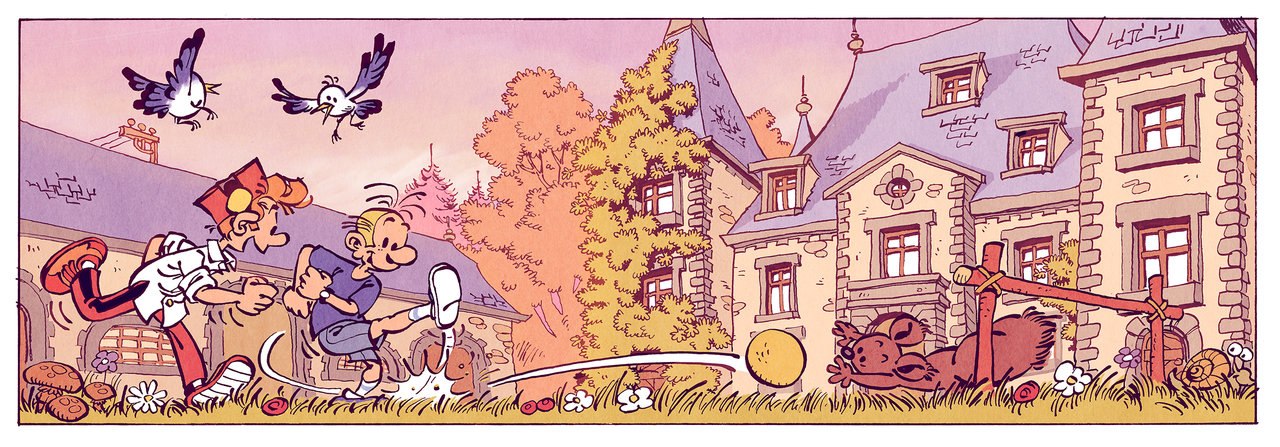
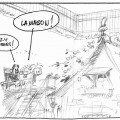
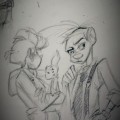
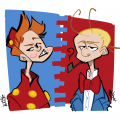


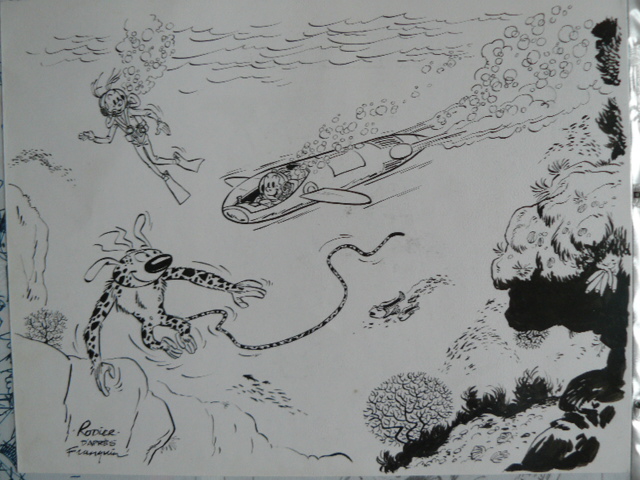
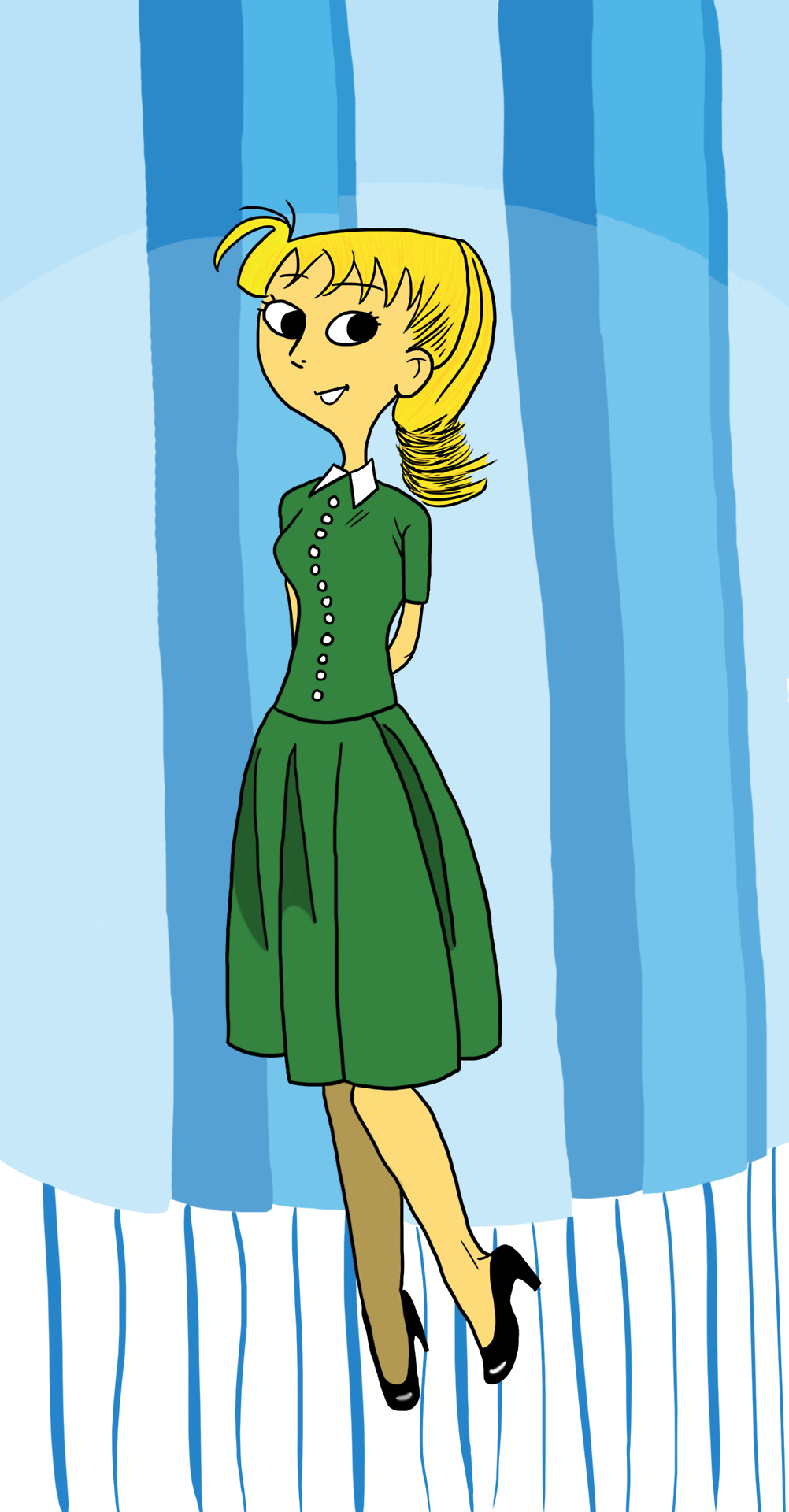
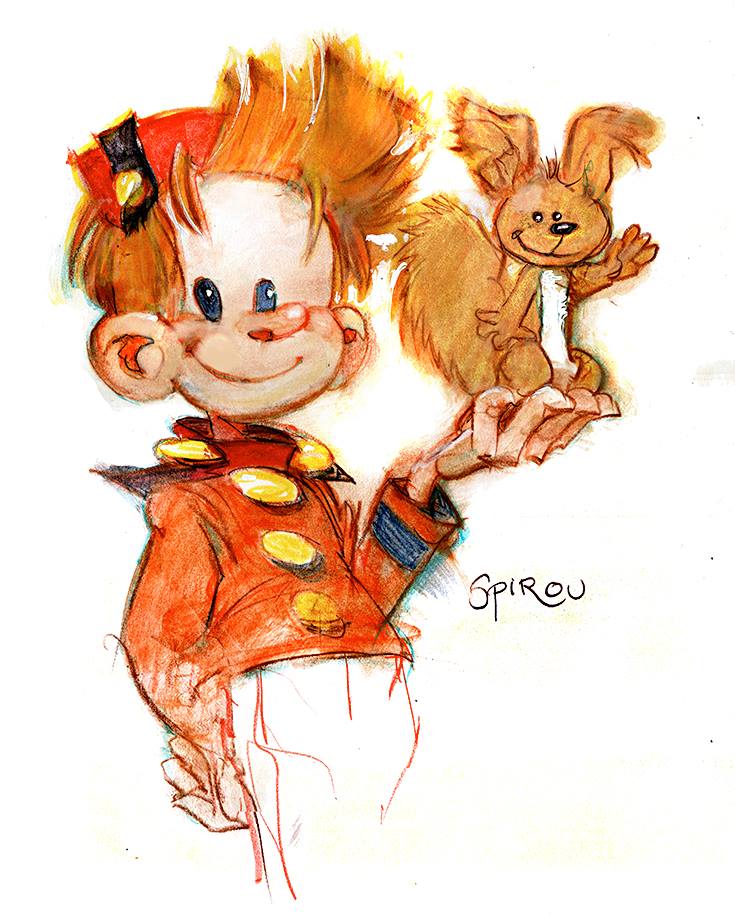
Sass Tseng liked this on Facebook.
Amélie Christophe liked this on Facebook.
Pascal Le Saux liked this on Facebook.
Louis Roussel liked this on Facebook.
Sarah Joy liked this on Facebook.
Les Amis de Spirou liked this on Facebook.
So, Spirou Reporter, what’s your opinion on the Fournier era of Spirou? I have to admit that I have only read ‘Tora Torapa’ from this period. I find it a bit ‘meh’ as Spirou albums go, nothing special but not bad either. The tone also seemed somewhat didactic and a bit childish in that album, to me.
Also, why was Fournier forced to leave? I read that he took too long to produce albums according to Dupuis and that his direction was considered to ‘folkloric’. Is there any truth in either of those statements?
I actually just reread the Fournier adventures this last week, for the first time since the nineties. As you might guess from that fact, I’ve never been a huge fan.
Coming at it with fresh eyes, I found that the art is still not quite to my taste. In the first three albums or so I think he’s actively bad. The next few are more competent, but I can’t say I really [i]like[/i] the art: too much stuff crammed into every panel, character designs that are exaggerated to the point of grotesqueness (even Ororea often looks rather disturbing), and indifferent page layouts and pacing. To be fair, that was kind of the style of the era. But he kept improving and developing throughout his run, and the last couple (“Kodo” and “Beans”) are, I think, very well drawn. However, in my view he only really came into his own as an artist after he left the series: I very much enjoy his current style (e.g. in the photo [url=http://letsgo2themoons.tumblr.com/post/96813347176/atmospheric-sketch-of-the-first-day-of-fete-de-la]here[/url]).
Similarly, I have issues with the writing, both his choice of subject matter and stories, his plotting, his characterizations, the tone (as you say, didactic and rather naive – though again, that was the way of the times), and the pacing. But there’s also great variation among his albums, and some are much better than others.
Overall, in my opinion [i]Tora Torapa[/i] is actually his best album (it was based on an idea by Franquin, which may have something to do with it), mostly due to a relatively streamlined and logical plot. Most fans seem to rate [i]L’Ankou[/i] (“The Ankou” or “Harbinger of Death”) higher, but to me it exhibits too many of the faults mentioned above.
As for Fournier’s exit, the short answer is yes, both of those statements are true. The long answer is… long. The introductions to volumes 11, 12 and 13 of the [i]intégrale[/i] collected edition discuss the events and motivations at length, but some things still remain unclear. Basically, some people at Dupuis, notably bean counters Michel Dupuis and José Dutillieu but to some extent probably also big boss Charles Dupuis, didn’t like Fournier for various reasons, and blamed him for falling sales (which were in fact mostly due to industry-wide trends), saying there was something wrong with his albums, or that he was too slow producing them, so that Spirou appeared too rarely in the [i]Journal de Spirou[/i].
Two ideas to increase production was to have a couple of different artists or teams alternate story by story (which they eventually tried for a while with Nic & Cauvin and Tome & Janry before realizing it didn’t work), or alternatively set up a studio with lots of assistants that could “mass produce” pages at a much higher pace. Fournier wouldn’t agree to either of these ideas, and quit when the first option was presented to him. That may have been their intention all along, since they wanted to get rid of him anyway: they would already have had him fired had it not been for opposition from the magazine’s editor-in-chief, Alain de Kuyssche.
The irony, of course, is that the chaos around his departure and the internal politics of the company at the time led to a much longer delay before the next Spirou adventure came out.
Daniel Lalmant liked this on Facebook.
Olivier Culot liked this on Facebook.
Charlie Aabø liked this on Facebook.
Helge Kvingedal liked this on Facebook.
I agree with a lot of your opinions in the above comment about Fournier’s Sprirou run, but I gotta say it’s still interesting to see this page from an unpublished album of his. 🙂 Any chance you will scanlate the existing material from this story?
Yes. I haven’t done any Fournier scanlations yet, and this one would definitely be high on the list.
It’s also available in Danish in the third Fournier volume (1976-1979) of the collected edition, from [url=http://www.forlagetzoom.dk/]Forlaget Zoom[/url] (currently out of print, but see [url=http://www.bogpriser.dk/splint-co-den-komplette-samling-1976-1979_fournier?isbn=9788792718075]here[/url]).
Harmen Leonardus Schouten liked this on Facebook.
Thank you for your informative and lenghty reply, Spirou Reporter! The story does make me wonder how Fournier got the gig in the first place, even if he did a decent job on the whole. Surely Franquin must have seen Fournier was nowhere near his own level of artistry (yet)? Then again, Franquin wanted to leave the series badly so perhaps he didn’t care as much as he might or should have?
I do feel sorry for Fournier being likely played so nastily by his superiors later on, whatever the faults of his stories might be.
By the way, would you feel like doing these kind of informative opinion pieces as you did here as real posts to your blog instead of having them buried in the comments? I don’t know if you would actually like to have discussions on your blog, of course but in my humble opinion, it would greatly add to the blog’s allure and quality. You definately know your stuff.
Hardly [i]anyone[/i] was on the level of Franquin, and Fournier was a promising young artist whom Franquin had been mentoring (much like Jijé had mentored Franquin and then handed the series over to him). So it made a certain amount of sense. The decision was not his, anyway. It was Charles Dupuis who picked Fournier as successor, and Franquin actually advised him against taking the job.
I wouldn’t mind doing some of these comments/discussions as blog posts, but I think I need some sort of prompt to go off of. People have suggested a series of articles about the different Spirou creators, which might work as a format. And as posts I would feel more responsibility to research and check my facts, add example pictures to support my evaluations and so on. It gets to be a bit more effort. I’ll keep it in mind, but I can’t promise anything.
Je ne comprend rien… tu reprend continuer les pages par fournier ou?
I read a Docteur Poche album recently. (The one with the butterfly island, the only one translated to Swedish.) And this Spirou story seems to have somewhat of a similar vibe to it. (Again, maybe not that surprising, considering the time period.)
Considering Franquin and Fournier. My impression was that Franquin found Fournier as a young and promising artist, who had to waste his talent on other people’s creations.